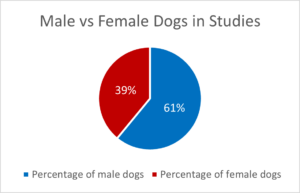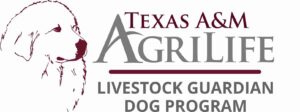 Roaming is one of the most significant issues with LGDs, but there is very little published literature on this topic. Many research articles are available on the dogs’ movements about livestock or their general movements in a pasture, but not on roaming. Roaming is the random travel of LGDs outside their pasture boundaries away from livestock. The reason for their trip may be predators, but often, the dogs travel in a straight line as if they are headed to a particular location over many miles. The reason for LGD roaming is not known. Roaming differs from patrolling outside pasture boundaries, as patrolling follows a dog’s regular guarding pattern. Recently, as part of my master’s thesis, I started a literature review on roaming. Still, despite querying academic search engines with thousands of articles, I only found 19 explicitly related to roaming. However, even of these 19, only six articles tracked the roaming behavior of the dogs. None of those articles were specifically looking at the roaming patterns of the dogs or how to stop that behavior. Researchers classified roaming as being a specific distance from livestock. Distances varied amongst the researchers. Hopefully, our bonding project can solve some of those issues for producers. One thing I found interesting is that more male dogs were used than females. We hypothesize this is because many believe male dogs are more aggressive toward other canine threats.
Roaming is one of the most significant issues with LGDs, but there is very little published literature on this topic. Many research articles are available on the dogs’ movements about livestock or their general movements in a pasture, but not on roaming. Roaming is the random travel of LGDs outside their pasture boundaries away from livestock. The reason for their trip may be predators, but often, the dogs travel in a straight line as if they are headed to a particular location over many miles. The reason for LGD roaming is not known. Roaming differs from patrolling outside pasture boundaries, as patrolling follows a dog’s regular guarding pattern. Recently, as part of my master’s thesis, I started a literature review on roaming. Still, despite querying academic search engines with thousands of articles, I only found 19 explicitly related to roaming. However, even of these 19, only six articles tracked the roaming behavior of the dogs. None of those articles were specifically looking at the roaming patterns of the dogs or how to stop that behavior. Researchers classified roaming as being a specific distance from livestock. Distances varied amongst the researchers. Hopefully, our bonding project can solve some of those issues for producers. One thing I found interesting is that more male dogs were used than females. We hypothesize this is because many believe male dogs are more aggressive toward other canine threats.
I am currently analyzing the data for the round four pups, and by the end of 2025, I will have completed my thesis on this group of dogs. One interesting note in the articles is that researchers found dogs roaming more at night than during the day. I am not sure whether our dogs roam at a specific time of day, but according to producers, it is generally predator-related when they do. Hopefully, we will better understand roaming patterns once I finish analyzing all the data from round four.
AgriLife Livestock Guardian Dog Program: Update and Events
We recently loaned Waylon to the ASU school farm in San Angelo. Angelo State runs a university research ranch right next to our location in

Waylon in a bonding pen at Angelo State University ranch. AgriLife picture courtesy of Sustaita, 2024
San Angelo, but they have been having many predator issues recently. Waylon will be on loan to them for the next 60 days to help determine whether it is worthwhile for their university to start running LGDs. A university farm’s unique management, high student traffic, and liability concerns present different challenges for integrating LGDs. Due to the success of integrating LGDs into the flocks at the TAMU campus in College Station, we believe this is the right decision for ASU as well, but we also recognize it is best for all parties to have a trial run just to make sure. Waylon is wearing the new Invisible Fence Brand collar we are evaluating to ensure he does not leave his pasture. We will keep you posted on the progress of the trial, but we are excited that this could eventually lead LGDs to play a more prominent role in college animal science labs and courses.
Please mark your calendars for our next online seminar on Nov. 20 at 3 p.m. CST. We are thrilled to have Mark Taylor from Prescribed Hunts present a workshop on using LGDs on ranches with hunting leases. Mark has unique ways of working around LGDs in pastures at the AgriLife Sonora Station that hunters use during deer season. This enlightening event is an excellent opportunity for all LGD enthusiasts. To secure your spot, watch the events page on our website. The workshop will be hosted on Zoom, ensuring easy access for all, and as always, it is free!
Bonding Project Update
Round Five Dogs
Mabel has been rebonding with some goats at the AgriLife Center for the last couple of weeks and will be going with them to the ranch in Menard this month. Hopefully, she will stay on the ranch and fit in well with Sara, who tends to be a more dominant dog. I expect Mabel to fit in as she seems more submissive. We will keep you posted on Mabel to see if she works out or if she is our first failed LGD from the bonding project.
Round Six Dogs

The newest version of the Invisible Fence Brand GPS-based collar. AgriLife picture courtesy of Invisible Fence Brand company, 2024
The pups are all doing well. Despite our hopes otherwise, SpotOn Fence has suspended its pursuit of developing long-life battery collars, but we appreciate their efforts in exploring this option. Issues with the sample units not charging, as well as we hoped, have proven difficult to overcome in our trials. Fortunately, we have received four new collars from SpotOn, which will have updated software this month that should allow two to three days of battery life out of the collars. The new collars we received from Invisible Fence have been working exceptionally well, but we still prefer the replaceable battery design of the original units. This previous design was more convenient than the current process, which requires removing the entire collar for recharging. While swapping the collars each time we need to charge isn’t as ideal, we couldn’t be happier with the collar’s performance while on the dogs. The puppies will be ready to go to cooperating producers in early November.
In closing
If you enjoyed this monthly LGD blog, please remember to subscribe to it with this link: The Guardian Way | Texas A&M AgriLife Research and Extension Center at San Angelo. 
If you have feedback on this article or would like to suggest topics for future articles, webinars, or workshops, please contact me at bill.costanzo@ag.tamu.edu or 325-657-7311.
If you are looking for information on LGDs, make sure to check out our website. It contains factsheets, research from around the world on LGDs, and case studies we have conducted.
The Texas A&M AgriLife Livestock Guardian Dog Program is a cooperative effort by Texas A&M AgriLife and the Texas Sheep and Goat Predator Management Board. Follow us on our social media sites and share them with your friends and family!
Facebook, Instagram, YouTube: @TAMUlivestockguarddog
 Remember to check out the Texas LGD Association online! You can follow the organization on Facebook or YouTube at @TexasLGDAssociation or visit its website.
Remember to check out the Texas LGD Association online! You can follow the organization on Facebook or YouTube at @TexasLGDAssociation or visit its website.




